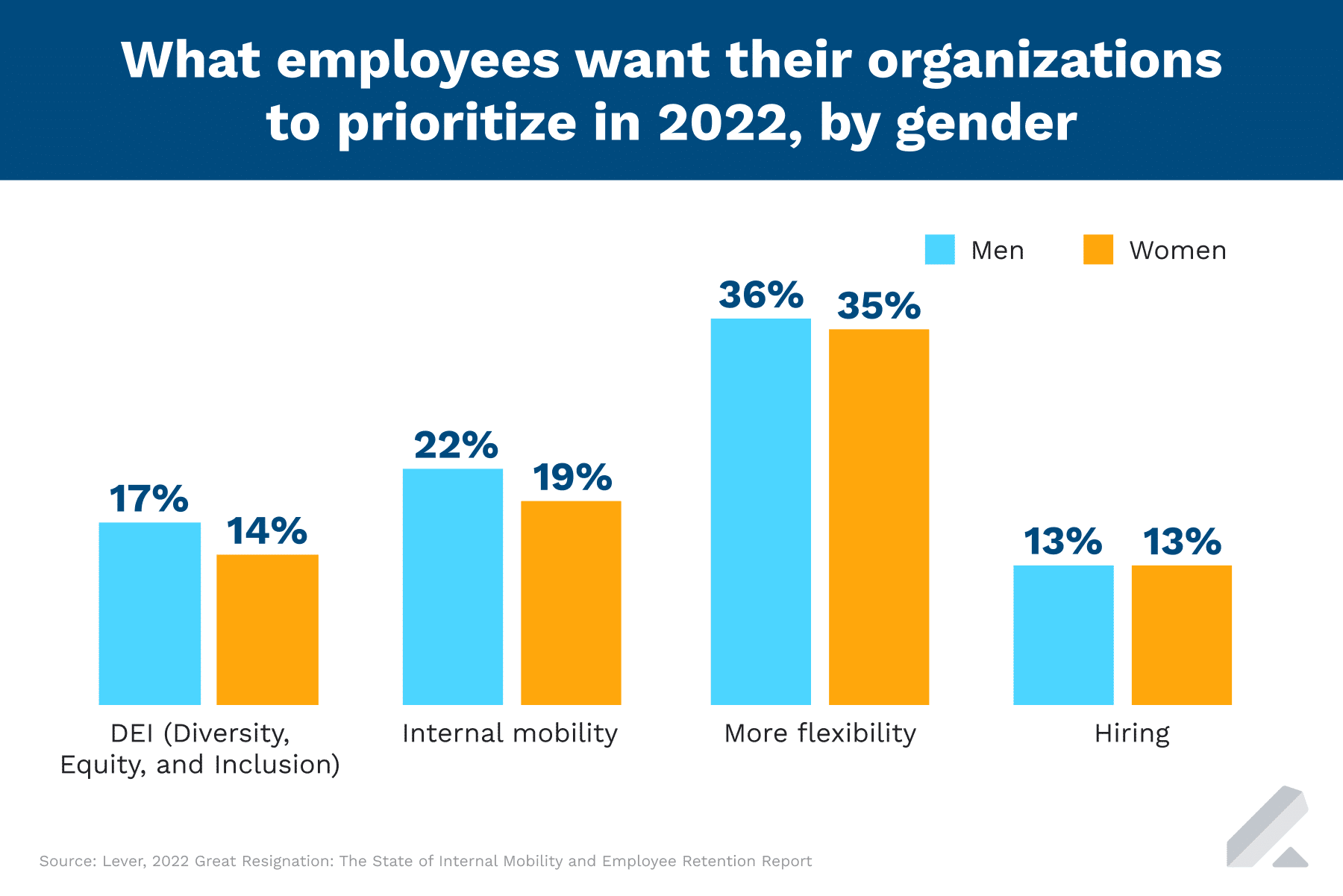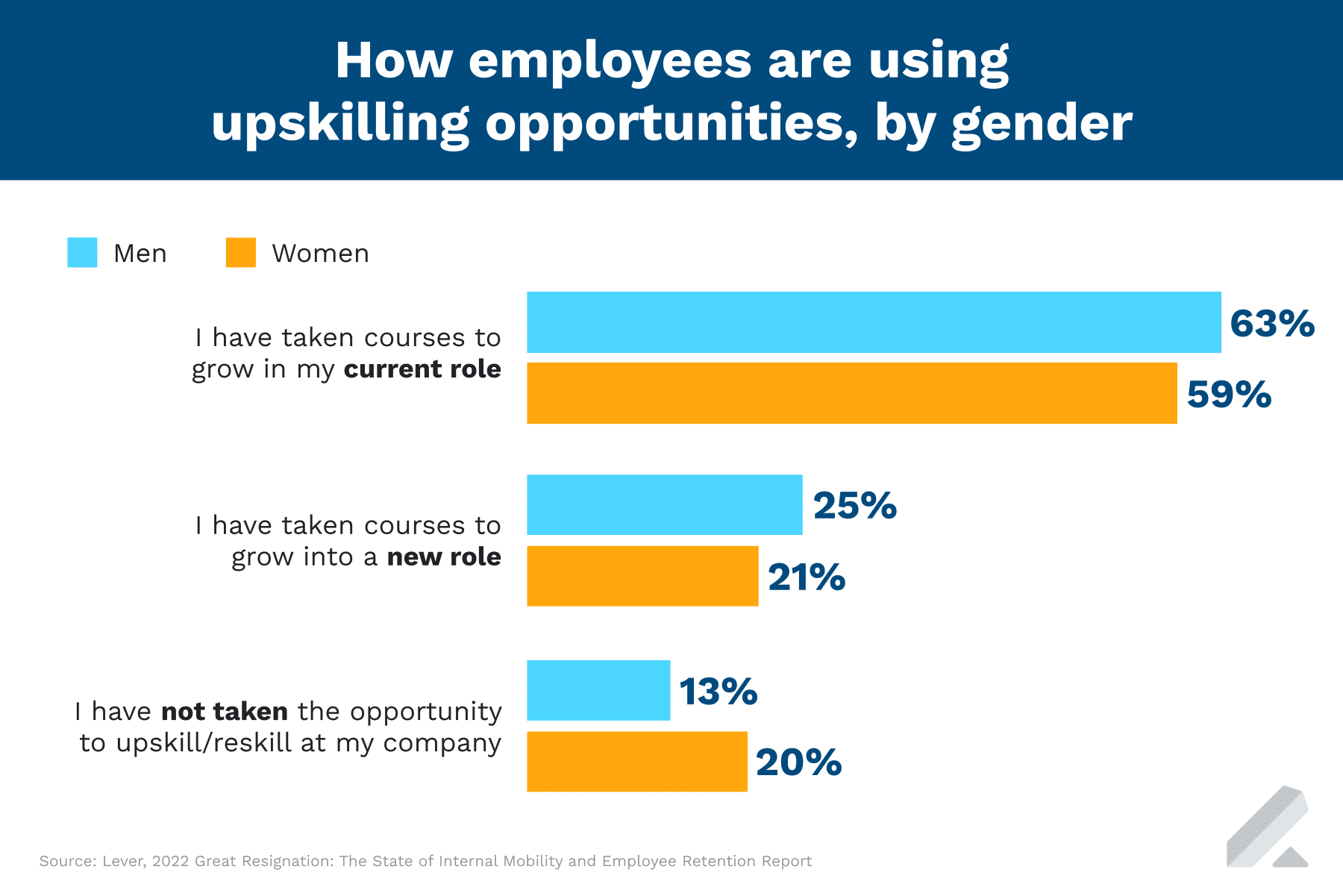Diversity is imperative to all workplaces. People with different backgrounds and experiences, who come together as a team, can develop innovative ideas that will keep your company alive and thriving.
- Despite this, companies in many industries and roles are not benefiting from this because they are dominated by a single sex.
For example, tech industry roles are typically filled by men, while nursing roles are typically filled by women. In both cases, the customers are more diverse than the people serving them — which doesn’t bode well for understanding their needs.
To better serve your customers, it’s important to cultivate gender diversity in the workplace. This goes beyond equal representation of males and females, as it should also include those with a non-binary gender identity.
Here are some tips to get started.
How to Improve Gender Diversity in the Workplace
Build an inclusive workplace.
Before attempting to hire for gender diversity, look within and evaluate your company culture.
- Is your company a good place to work, regardless of gender?
- Do you treat people across the gender spectrum equally?
Consult your employees to learn how you can build a more inclusive workplace, and put in the work to continually improve your company culture. An inclusive culture will help build your employer brand, so you can attract and retain a diverse workforce.
In our Essential Guide to Diversity, Equity, and Inclusion, the Lever team shares even more concrete strategies to help you foster inclusion as your first step.
Write better job descriptions.
Improve gender diversity in the workplace by removing gender biases from your job descriptions — before you even speak with a candidate. Men will apply if they are 60% qualified, whereas women will only apply when they are 100% qualified.
Rather than writing job descriptions with a list of qualifications, craft performance-based impact job descriptions, which focus on what the person hired would be responsible for accomplishing. Also be careful to avoid gendered language.
For instance, champion is masculine-coded, while polite is feminine-coded. Rethinking your job descriptions with these tips in mind can get you one step closer to gender diversity.
Proactively source a diverse pipeline.
Rather than waiting around for talent to come to you, proactively source a gender-diverse pipeline.
Many sourcing platforms have options to source candidates from underrepresented groups — even if it requires a little creative thinking and extra legwork.
For instance, you can build a search string to source qualified candidates who list college sororities or LGBTQ organizations on their profiles. Doing so will allow you to build a diverse pipeline of top-tier talent.
Provide your team with unconscious-bias training.
Unconscious biases exist in all of us, whether we realize it or not. Recognizing them is the first step toward overcoming them in the recruiting and hiring process.
- Imagine the bias that first impression can carry through the recruitment process.
The bias does go both ways, however, as men are often questioned about their interest interest in jobs dominated by women, such as those in nursing, teaching, or human resources.
To overcome these hiring biases, interview teams should learn to recognize them, as well as how to fairly evaluate candidates on a predetermined set of criteria.
Set a diverse group of interviewers.
While you’re busy evaluating candidates, don’t forget that they’re evaluating you as well. Roughly two-thirds of candidates said that a diverse workforce is an important factor when evaluating companies and job offers.
Include both men and women, and consider adding in a lunch interview or office tour to introduce the candidate to more people on your team.
With a diverse interview panel, candidates from underrepresented groups will likely feel more comfortable, instead of feeling like the odd one out.
Implement fair compensation practices.
On average, women earn 82 cents for every dollar men earn. Once experience, industry, and job level are factored in, a woman still only earns about 98% of what an equally qualified man with the same job earns.
- If you want to attract, hire, and retain top-tier talent, you need to compensate them fairly — regardless of gender.
A formal employee compensation strategy can help. Utilize data to set compensation bands for each position, and consider each employee’s experience, skills, education, and performance to determine where they should fall within that band.
Also, explain your compensation offer with each employee, and provide developmental opportunities so each employee knows how they can earn salary increases and promotions. Doing so will make compensation much more strategic, transparent, and fair.
Learn from your exit interviews.
Exit interviews are considerably useful, as they can help reveal specific reasons why people are leaving your company, which can help you, in turn, better attract and retain talent.
If you’re working toward gender diversity in the workplace, you can also dig into your data to understand the differences in why men and women are leaving your organization.
- This can provide insights that are unique to your company, and allow you to monitor your progress over time.
If, for instance, you learn that women are less satisfied with compensation than men, you can take steps to improve your compensation strategy, and see how perceptions change over the course of a year.
Final thoughts
While this is by no means an exhaustive list, these are all things you should consider when working toward gender diversity in the workplace.
Let your current employees guide your efforts, as they can provide valuable insights into what you organization is doing well, and where there’s room for improvement.
Also, consider how gender diverse your company is overall, as well at the team and seniority level. If you want to build a world-class team, you will want to see gender diversity make progress across the board.
Watch our webinar with Lever customer Blue Bottle Coffee to learn how the company’s regular DEI audits help its improve the racial and gender diversity across its organization.


